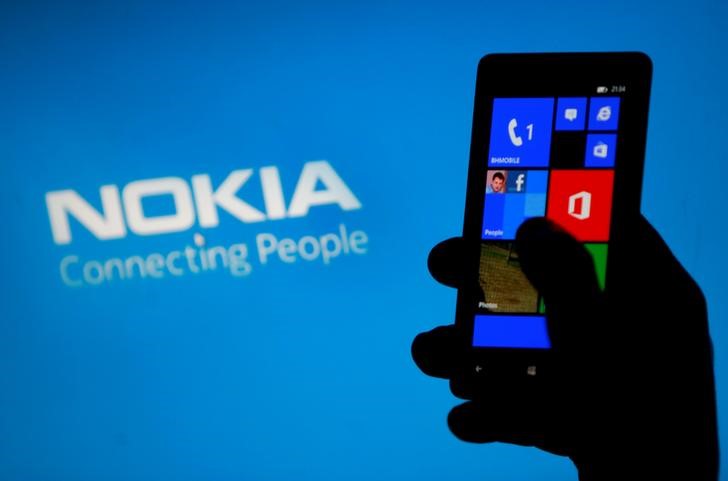Image: A woman poses with a Nokia Lumia smartphone in this photo illustration, May 6, 2013. REUTERS/Dado Ruvic/Illustration/File Photo
By Eric Auchard and Jussi Rosendahl
FRANKFURT/HELSINKI (Reuters) – Nokia smartphones are poised for a comeback after former managers at the Finnish company licensed the handset brand from Microsoft and struck up partnerships with Google and phone manufacturer Foxconn.
Nokia was once the world’s dominant cellphone maker but missed the shift to smartphones and then chose Microsoft’s unpopular Windows operating system for its “Lumia” range.
Nokia quit smartphones in 2014 by selling its handset activities to Microsoft to focus on mobile network equipment. Microsoft continued selling Lumia smartphones under its own name but this year largely abandoned that business, too.
HMD Global, led by Nokia veteran Arto Nummela, wants to launch its first Nokia smartphone in the early part of next year using Google’s Android operating system.
Success will require a dash for scale by stealing business from Apple, Samsung and dozens of other players in a cut-throat industry.
“Consumers may be carrying different smartphones now, but are they really in love and loyal to those brands?” said Nummela in an interview.
The Nokia consumer brand lives on as the badge on cheaper, entry-level “feature phones” sold mainly in Asia, India and Eastern Europe, though Microsoft invested little to market the name in recent years. Smartphones typically cost anywhere from ten to 30 times as much as these basic phones, which sell for as little as $20.
“For a new entrant, having an established brand provides it with an instant on-ramp,” said mobile phone analyst Ben Wood of CCS Insight, who suggested that phone vendors with weaker brands should not take the new challenge lightly.
“The barriers to entry for the Android phone space are low,” said Wood. “What HMD has is the Nokia brand and management experience. The key to its success will be driving scale.”
CEO Nummela, who was once responsible for Nokia’s sales and product development, does not lack ambition.
“We want to be one of the key competitive players in the smartphone business,” he told Reuters.
HMD President Florian Seiche previously worked at Siemens, Orange, HTC and Nokia. Chief Marketing Officer Pekka Rantala is a former CEO of Rovio, the maker of the Angry Birds game, as well as a Nokia veteran.
“We are not going to skip any markets in the long term,” Seiche said, adding that HMD had already set up offices in 40 locations around the world.
NO FUNDING FROM NOKIA CORP
HMD is owned by Smart Connect LP, a private equity fund run by Jean-Francois Baril, who was once in charge of Nokia’s world-leading supply chain management system. Other HMD managers have put in money of their own.
HMD on Thursday took over the feature phone business that Nokia Corp sold to Microsoft. It has a licensing deal with Nokia giving it sole use of the brand on mobile phones and tablets for the next decade. It will pay Nokia royalties for the brand and patents, but Nokia has no direct investment in HMD.
HMD is building its smartphone operating system in partnership with Google and all its Nokia devices will be manufactured by Foxconn of Taiwan, the world’s largest contract manufacturer.
Nummela says his team’s enduring relationships with phone service providers and retailers could help HMD quickly convince owners of Nokia feature phones to upgrade in markets like India, Indonesia and Russia.
The Nokia name is still on a tenth of the feature phones sold around the world, though in recent years it ceded ground to Samsung and TCL, maker of Alcatel-brand phones, as well as smaller players, according to market research firm Strategy Analytics.
Shipments of Nokia feature phones plunged 40 percent in fiscal year 2015 and HMD must reverse that decline while trying to break back into the smartphone market, where hundreds of vendors compete by selling phones that can be hard to distinguish.
“The feature phone is the essence of the business,” Wood said. “Don’t be under any illusions that this market is over.”
(Editing by Jane Merriman and Tom Pfeiffer)
Copyright 2016 Thomson Reuters. Click for Restrictions.


